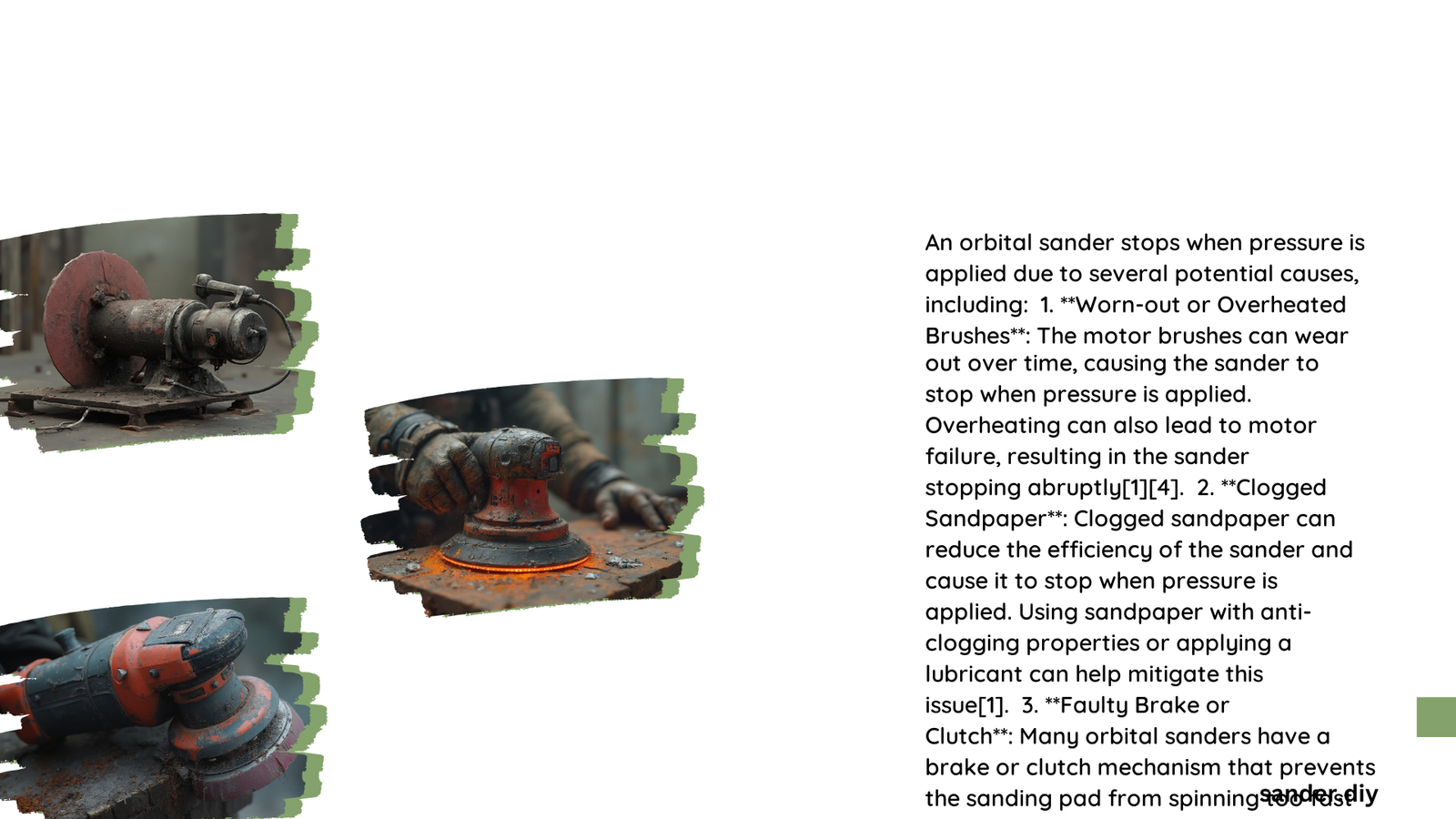When an orbital sander unexpectedly stops during operation under pressure, it signals potential mechanical, electrical, or performance issues that require immediate diagnostic attention. Understanding the precise mechanisms behind this problem involves examining motor load, air pressure thresholds, and operational parameters that influence tool functionality and user experience.
What Causes Orbital Sander to Stop Under Pressure?
Motor Load and Performance Limitations
Orbital sanders have specific operational thresholds that determine their performance when pressure is applied. The primary reasons for stopping include:
- Motor Overload Mechanisms
- Excessive hand pressure increases motor resistance
- Friction generates additional heat
-
Motor protection circuits trigger automatic shutdown
-
Pressure Sensitivity Factors
- Pneumatic sanders: Optimal pressure range at 90 PSI
- Electric sanders: RPM-dependent performance
- Mechanical stress threshold varies by model
Diagnostic Pressure Sensitivity Table
| Sander Type | Optimal Pressure | Performance Indicator | Potential Stoppage Risk |
|---|---|---|---|
| Pneumatic | 90 PSI | 12,000 RPM | High at >100 PSI |
| Electric | N/A | 10,000 RPM | Moderate with excessive pressure |
How to Diagnose Orbital Sander Pressure-Related Stoppage?

Systematic Troubleshooting Approach
Air Pressure Verification
- Check compressor output
- Ensure consistent 90 PSI supply
- Inspect air line connections
- Verify regulator functionality
Motor Performance Assessment
- Listen for unusual sounds
- Monitor temperature during operation
- Check for mechanical resistance
- Evaluate sanding pad movement
Critical Intervention Steps
- Immediate Actions
- Release pressure immediately
- Allow sander to cool down
- Inspect for visible damage
-
Reset motor if applicable
-
Advanced Diagnostic Techniques
- Use multimeter to check electrical continuity
- Examine motor brushes
- Verify internal wiring connections
- Test motor resistance
What Are Recommended Pressure Application Techniques?
Optimal Sanding Pressure Guidelines
- Minimal Hand Pressure
- Let sander’s weight do primary work
- Maintain consistent, light contact
-
Avoid forcing tool into surface
-
Material-Specific Considerations
- Soft woods: Lighter pressure
- Hard woods: Moderate, controlled pressure
- Metal surfaces: Minimal pressure, specialized abrasives
Prevention Strategies
- Regular maintenance
- Proper lubrication
- Correct abrasive selection
- Periodic tool inspection
Technical Recommendations for Preventing Stoppage
Mechanical Optimization
- Use manufacturer-recommended accessories
- Maintain proper air filtration
- Replace worn components promptly
- Follow calibration guidelines
Electrical System Considerations
- Check power supply stability
- Ensure proper voltage
- Protect against electrical fluctuations
- Use surge protectors
Expert Insights on Orbital Sander Performance
Professional woodworkers recommend understanding your specific sander’s limitations and maintaining a delicate balance between applied pressure and tool capabilities. Each model has unique characteristics that influence its performance envelope.
Key Takeaway
Orbital sander stoppage under pressure is rarely a single-factor issue but a complex interaction of mechanical, electrical, and operational parameters.
Conclusion
Successful orbital sander operation requires nuanced understanding of pressure dynamics, motor limitations, and precise technique. By implementing systematic diagnostic approaches and adhering to manufacturer guidelines, users can maximize tool performance and longevity.
